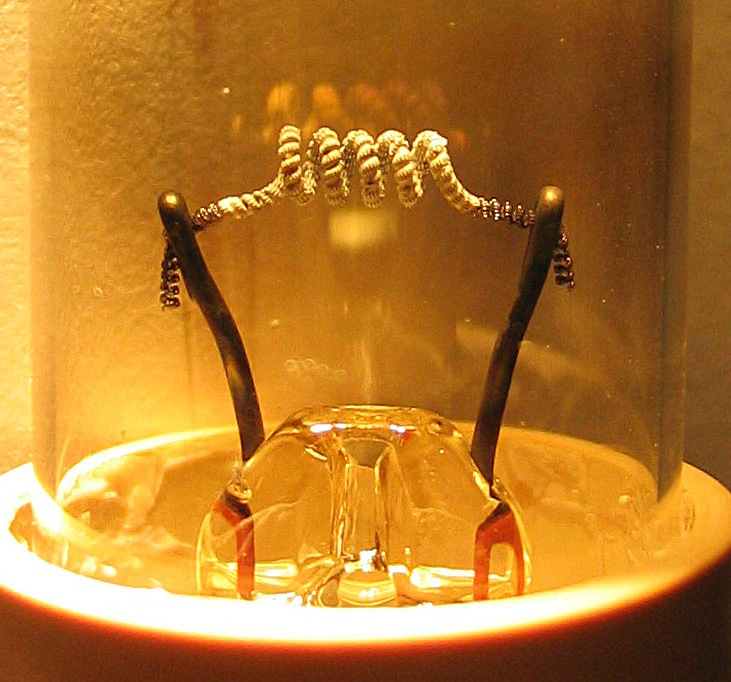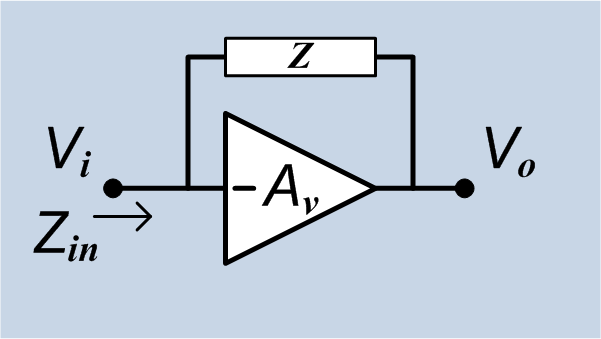|
955 Acorn Triode
The type 955 triode "acorn tube" is a small triode thermionic valve (vacuum tube in USA) designed primarily to operate at high frequency. Although data books specify an upper limit of 400–600 MHz, some circuits may obtain gain up to about 900 MHz. Interelectrode capacitances and Miller capacitances are minimized by the small dimensions of the device and the widely separated pins. The connecting pins are placed around the periphery of the bulb and project radially outward: this maintains short internal leads with low inductance, an important property allowing operation at high frequency. The pins fit a special socket fabricated as a ceramic ring in which the valve itself occupies the central space. The 955 was developed by RCA and was commercially available in 1935. The 955 is one of about a dozen types of "acorn valve", so called because their size and shape is similar to the acorn The acorn is the nut (fruit), nut of the oaks and their close relatives (gener ... [...More Info...] [...Related Items...] OR: [Wikipedia] [Google] [Baidu] |
Class-A Amplifier
In electronics, power amplifier classes are letter symbols applied to different Amplifier#Power_amplifiers, power amplifier types. The class gives a broad indication of an amplifier's Electrical efficiency, efficiency, linearity and other characteristics. Broadly, as you go up the alphabet, the amplifiers become more efficient but less linear, and the reduced linearity is dealt with through other means. The first classes, A, AB, B, and C, are related to the time period that the active amplifier device is passing current, expressed as a fraction of the period of a signal waveform applied to the input. This metric is known as conduction angle (\theta). A class-A amplifier is conducting through the entire period of the signal (\theta=360°); class-B only for one-half the input period (\theta=180°), class-C for much less than half the input period (\theta 180°); each one of the two active elements conducts more than half of the time. Class-AB is widely considered a good compromise f ... [...More Info...] [...Related Items...] OR: [Wikipedia] [Google] [Baidu] |
Oscillator
Oscillation is the repetitive or periodic variation, typically in time, of some measure about a central value (often a point of equilibrium) or between two or more different states. Familiar examples of oscillation include a swinging pendulum and alternating current. Oscillations can be used in physics to approximate complex interactions, such as those between atoms. Oscillations occur not only in mechanical systems but also in dynamic systems in virtually every area of science: for example the beating of the human heart (for circulation), business cycles in economics, predator–prey population cycles in ecology, geothermal geysers in geology, vibration of strings in guitar and other string instruments, periodic firing of nerve cells in the brain, and the periodic swelling of Cepheid variable stars in astronomy. The term ''vibration'' is precisely used to describe a mechanical oscillation. Oscillation, especially rapid oscillation, may be an undesirable phenomenon in ... [...More Info...] [...Related Items...] OR: [Wikipedia] [Google] [Baidu] |
Acorn Tube
The 955 is typical of the acorn designs, named for the glass cap holding the terminals with the main part of the tube extending from it. An acorn tube, or acorn valve, refers to any member of a family of VHF/UHF vacuum tubes starting just before World War II. They were named after their resemblance to the acorn, specifically due to the glass cap at one end of the tube that looked similar to the cap on an acorn. The acorn tubes found widespread use in radios and radar systems. High-frequency performance is limited by (1) parasitic lead inductance and capacitance and skin effect, and (2) electron transit time (the time required to travel from cathode to anode). Transit time effects are complicated, but one simple effect is the phase margin; another one is input conductance, also known as grid loading. At extremely high frequencies, electrons arriving at the grid may become out of phase with those departing towards the anode. This imbalance of charge causes the grid to exhibit a re ... [...More Info...] [...Related Items...] OR: [Wikipedia] [Google] [Baidu] |
Triode
A triode is an electronic amplifier, amplifying vacuum tube (or ''thermionic valve'' in British English) consisting of three electrodes inside an evacuated glass envelope: a heated Electrical filament, filament or cathode, a control grid, grid, and a Plate electrode, plate (anode). Developed from Lee De Forest's 1906 Audion, a partial vacuum tube that added a grid electrode to the thermionic diode (Fleming valve), the triode was the first practical electronic amplifier and the ancestor of other types of vacuum tubes such as the tetrode and pentode. Its invention helped make amplified radio technology and long-distance telephony possible. Triodes were widely used in consumer electronics devices such as radios and televisions until the 1970s, when transistors replaced them. Today, their main remaining use is in high-power Radio frequency, RF amplifiers in Transmitter, radio transmitters and industrial RF heating devices. In recent years there has been a resurgence in demand for ... [...More Info...] [...Related Items...] OR: [Wikipedia] [Google] [Baidu] |
Thermionic Valve
Thermionic emission is the liberation of charged particles from a hot electrode whose thermal energy gives some particles enough kinetic energy to escape the material's surface. The particles, sometimes called ''thermions'' in early literature, are now known to be ion source, ions or electrons. Thermal electron emission specifically refers to emission of electrons and occurs when thermal energy overcomes the material's work function. After emission, an opposite charge of equal magnitude to the emitted charge is initially left behind in the emitting region. But if the emitter is connected to a Electric battery, battery, that remaining charge is neutralized by charge supplied by the battery as particles are emitted, so the emitter will have the same charge it had before emission. This facilitates additional emission to sustain an electric current. Thomas Edison in 1880 while inventing Edison light bulb, his light bulb noticed this current, so subsequent scientists referred to the cur ... [...More Info...] [...Related Items...] OR: [Wikipedia] [Google] [Baidu] |
Vacuum Tube
A vacuum tube, electron tube, thermionic valve (British usage), or tube (North America) is a device that controls electric current flow in a high vacuum between electrodes to which an electric voltage, potential difference has been applied. It takes the form of an evacuated tubular envelope of glass or sometimes metal containing electrodes connected to external connection pins. The type known as a thermionic tube or thermionic valve utilizes thermionic emission of electrons from a hot cathode for fundamental Electronics, electronic functions such as signal amplifier, amplification and current Rectifier, rectification. Non-thermionic types such as vacuum phototubes achieve electron emission through the photoelectric effect, and are used for such purposes as the detection of light and measurement of its intensity. In both types the electrons are accelerated from the cathode to the anode by the electric field in the tube. The first, and simplest, vacuum tube, the diode or Flem ... [...More Info...] [...Related Items...] OR: [Wikipedia] [Google] [Baidu] |
Capacitance
Capacitance is the ability of an object to store electric charge. It is measured by the change in charge in response to a difference in electric potential, expressed as the ratio of those quantities. Commonly recognized are two closely related notions of capacitance: ''self capacitance'' and ''mutual capacitance''. An object that can be electrically charged exhibits self capacitance, for which the electric potential is measured between the object and ground. Mutual capacitance is measured between two components, and is particularly important in the operation of the capacitor, an elementary linear electronic component designed to add capacitance to an electric circuit. The capacitance between two conductors depends only on the geometry; the opposing surface area of the conductors and the distance between them; and the permittivity of any dielectric material between them. For many dielectric materials, the permittivity, and thus the capacitance, is independent of the potential ... [...More Info...] [...Related Items...] OR: [Wikipedia] [Google] [Baidu] |
Miller Effect
In electronics, the Miller effect (named after its discoverer John Milton Miller) accounts for the increase in the equivalent input capacitance of an inverting voltage amplifier due to amplification of the effect of capacitance between the amplifier's input and output terminals, and is given by :C_=C (1+A_v)\, where -A_v is the voltage gain of the inverting amplifier (A_v positive) and C is the feedback capacitance. Although the term ''Miller effect'' normally refers to capacitance, any impedance connected between the input and another node exhibiting gain can modify the amplifier input impedance via this effect. These properties of the Miller effect are generalized in the Miller theorem. The Miller capacitance due to undesired parasitic capacitance between the output and input of active devices like transistors and vacuum tubes is a major factor limiting their gain at high frequencies. History When Miller published his work in 1919, he was working on vacuum tube triodes. Th ... [...More Info...] [...Related Items...] OR: [Wikipedia] [Google] [Baidu] |
Inductance
Inductance is the tendency of an electrical conductor to oppose a change in the electric current flowing through it. The electric current produces a magnetic field around the conductor. The magnetic field strength depends on the magnitude of the electric current, and therefore follows any changes in the magnitude of the current. From Faraday's law of induction, any change in magnetic field through a circuit induces an electromotive force (EMF) (voltage) in the conductors, a process known as electromagnetic induction. This induced voltage created by the changing current has the effect of opposing the change in current. This is stated by Lenz's law, and the voltage is called ''back EMF''. Inductance is defined as the ratio of the induced voltage to the rate of change of current causing it. It is a proportionality constant that depends on the geometry of circuit conductors (e.g., cross-section area and length) and the magnetic permeability of the conductor and nearby materials. An ... [...More Info...] [...Related Items...] OR: [Wikipedia] [Google] [Baidu] |
Acorn
The acorn is the nut (fruit), nut of the oaks and their close relatives (genera ''Quercus'', ''Notholithocarpus'' and ''Lithocarpus'', in the family Fagaceae). It usually contains a seedling surrounded by two cotyledons (seedling leaves), enclosed in a tough Nutshell, shell known as the pericarp, and borne in a cup-shaped Calybium, cupule. Acorns are long and on the fat side. Acorns take between 5 and 24 months (depending on the species) to mature; see the List of Quercus species, list of ''Quercus'' species for details of oak classification, in which acorn morphology (biology), morphology and phenology are important factors. Etymology The word ''acorn'' (earlier ''akerne'', and ''acharn'') is related to the gothic language, Gothic name ''akran'', which had the sense of "fruit of the unenclosed land". The word was applied to the most important forest produce, that of the oak. Geoffrey Chaucer, Chaucer spoke of "achornes of okes" in the 14th century. By degrees, popular etym ... [...More Info...] [...Related Items...] OR: [Wikipedia] [Google] [Baidu] |
Nickel–cadmium Battery
The nickel–cadmium battery (Ni–Cd battery or NiCad battery) is a type of rechargeable battery using nickel oxide hydroxide and metallic cadmium as electrodes. The abbreviation ''Ni–Cd'' is derived from the chemical symbols of nickel (Ni) and cadmium (Cd): the abbreviation ''NiCad'' is a registered trademark of Saft Groupe S.A., SAFT Corporation, although this brand name is genericized trademark, commonly used to describe all Ni–Cd batteries. Battery (electricity)#Wet cell, Wet-cell nickel–cadmium batteries were invented in 1899. A Ni–Cd battery has a terminal voltage during discharge of around 1.2 volts which decreases little until nearly the end of discharge. The maximum electromotive force offered by a Ni–Cd cell is 1.3V. Ni–Cd batteries are made in a wide range of sizes and capacities, from portable sealed types interchangeable with carbon–zinc dry cells, to large ventilated cells used for standby power and motive power. Compared with other types of rechargeab ... [...More Info...] [...Related Items...] OR: [Wikipedia] [Google] [Baidu] |






